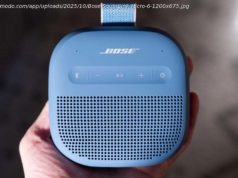Platform can handle ‘hundreds of millions’ of devices and integrate with Google’s analytics services
Google aims to solve the obstacle of IoT device and data management with the public beta release of its Cloud IoT Core platform.
Google Cloud Platform has added new features to the public beta, which ensure secure device connectivity and manageability at scale for end users.
Announced at Google I/O in May, Cloud IoT Core helps businesses to manage IoT data and devices from a central location; it also provides a source of operational data for companies’ analytics systems, which can be used to react to change in real-time.
As well as being able to manage ‘hundreds of millions’ of devices from one location, Google says that companies can use the platform to gain actionable insights, by ingesting IoT data and connecting to its analytics services such as Cloud Dataflow or BigQuery .
Based on feedback from the private beta, users of the platform can now verify the ownership of device keys. Customers can bring their own device key signed by their Certificate Authority (CA); IoT Core verifies the signature of the key provided by the device with the CA certificate during the authentication process.
Google has added secure connectivity over HTTP, in addition to the standard MQTT protocol, to more securely connect existing devices and gateways to the platform.
Finally, users of Cloud IoT Core can now view the last state and properties of a device even when it is not connected, through logical device representation. This provides APIs for applications to retrieve and update these details when a device is not connected.
Some of GCP’s current partners for the platform include Smart Parking and Tellmeplus. Smart Parking is the designer and developer of a parking management technology, now being extended to a smart city platform; this uses Cloud IoT Core to ingest data from ‘any number’ of distributed devices. Group CTO John Heard said:
«Our devices are heavily used and constantly send us a huge volume of data. By connecting these devices to Cloud IoT Core, we have a secure and reliable way to not only ingest that data but then also use it to gain valuable insights. We know exactly how our systems are performing and can push updates to devices to ensure we deliver the best products and services as cost effectively as possible.»
Heard told Computing, «Google’s Cloud IoT Core allowed us to eliminate our own developed functionality with a truly cloud-native foundation service that we can completely trust, leverage and achieve open benefits [with] that would otherwise have been a less compelling alternative. It only took a week for one of our developers to transition our incoming data and device management to Cloud IoT Core and we haven’t had a single issue since!… In short, we picked the Google Cloud Platform, including Cloud IoT Core, because we knew this was going to take us forward on our strategic and capability journey with confidence as well as open new opportunities.»
At the same time as its availability announcement, Google revealed a new pricing model for the platform, whereby customers can register as many devices as they want and only pay when they connect to and exchange data with Cloud IoT Core.
The first 250MB of data each month are free, after which prices are tiered (250MB to 250GB; 250GB to 5TB; and 5TB+).
Customers in vertical markets including transportation, oil and gas, utilities, health care and manufacturing are using the service now.
Google’s Indranil Chakraborty said, «We want to continue working with partners because at the end of the day, for any enterprise customer [building] a complex solution they need to work with companies on the hardware side, with ISVs, and with cloud platforms — you need all the ingredients.»
Speaking about the future of big data and the IoT, Heard said:
«Getting data used to be the hard part. However, IoT management services (like IoT Core and AWS IoT Platform) now make onboarding almost too simple — but this is just a part of the bigger objective: useful information-based insight. The challenge comes from deriving actionable meaning from large volumes of disparate data. In other words, how do I link together seemingly unrelated data?
«We are seeking to change this from being a challenge into becoming an increasingly natural enablement for cities, businesses, and users to ‘see’ powerful yet simple insights from these large and diverse information sets in a totally responsive manner. As an illustration, using the SmartCloud Platform we will be able to detect and show a spike in departures in the downtown area (as parking sensors report vacancy data), then offer this information to my traffic light management system to improve the flow of outbound traffic. This is where powerful data analytic tools (like BigQuery/Dataflow/DataPrep) and machine learning platforms become indispensable. This isn’t just big data, this is streaming big data; not a data lake — a data waterfall. We’re not using terabytes of data just to create reports, we’re using it in real-time to make meaningful business decisions.»






